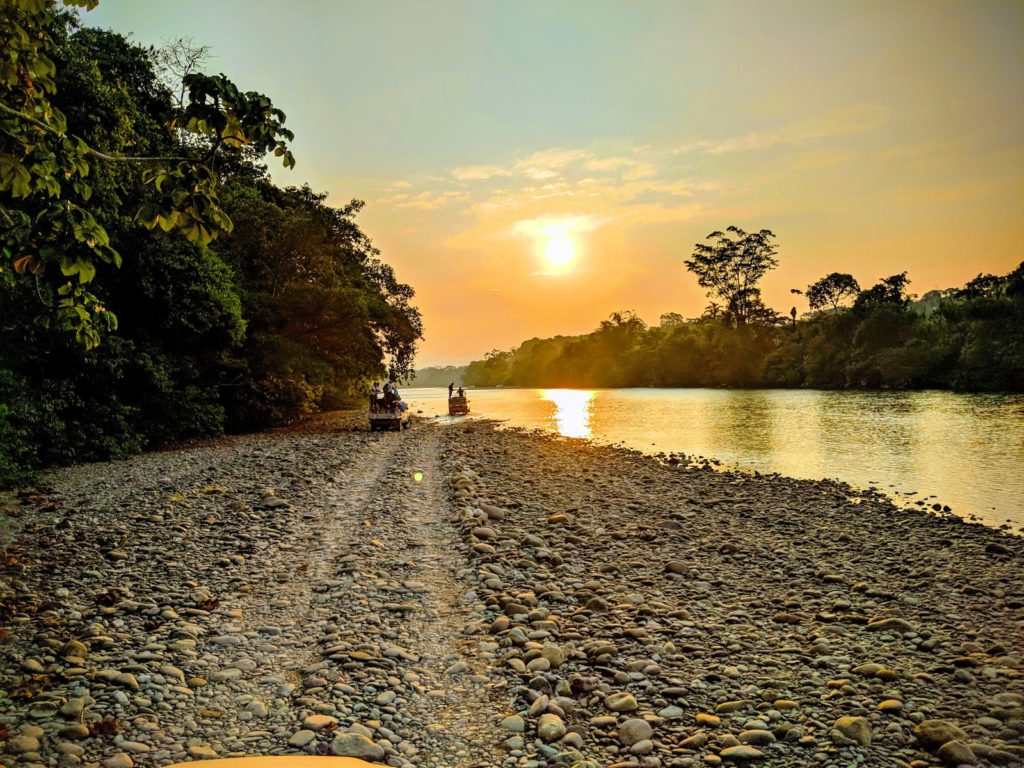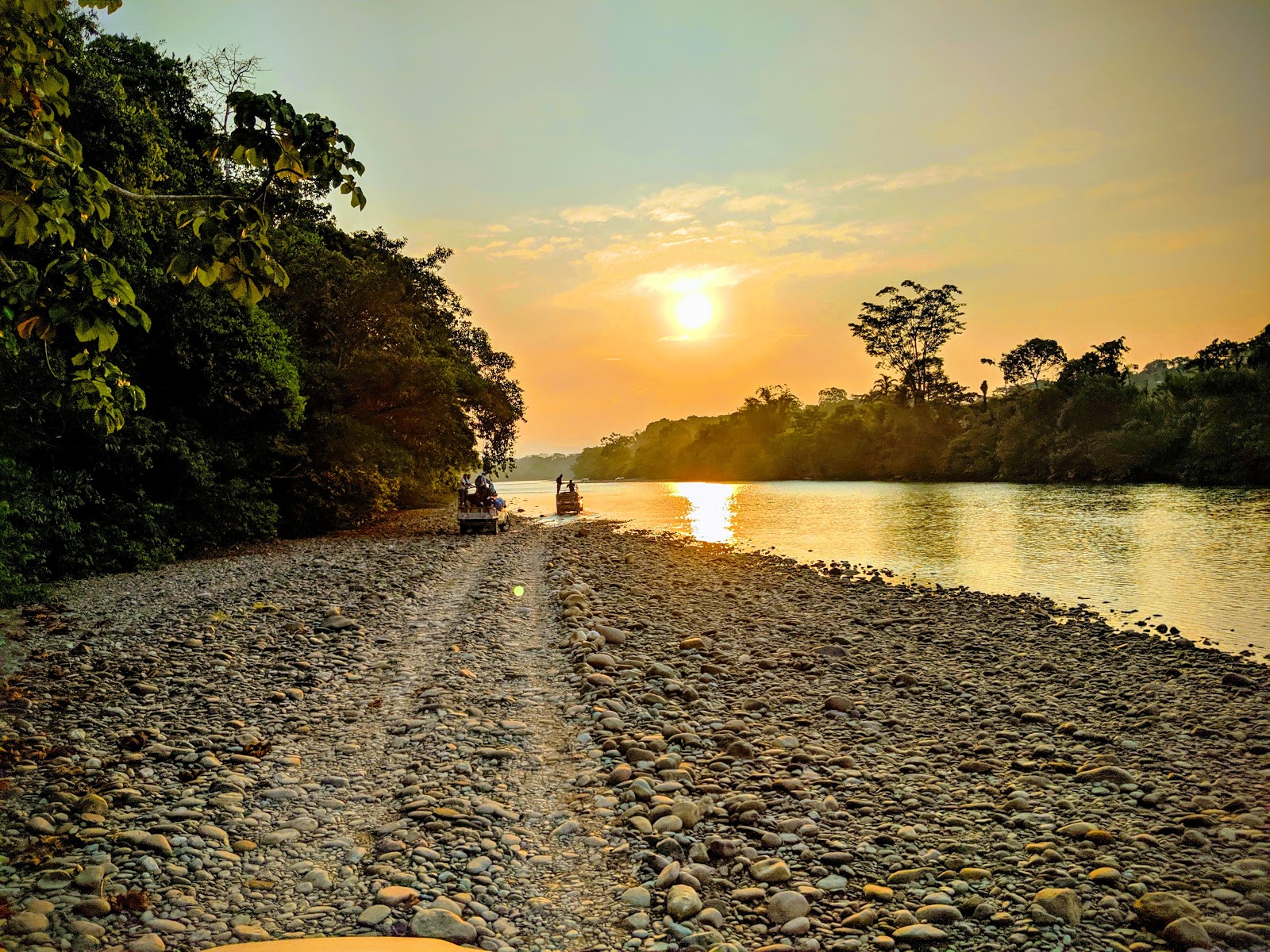Beginning August 10th, 2019, three members of the EWB Washington-DC Professionals chapter (EWB-DC) traveled to Shiringamazú, Peru. This trip lasted for 13 days and was the second assessment trip for this project. Commodiously speaking, the trip had three objectives. First, gather data. Second, understand the community’s water demand. Third, coordinating with community leaders to produce positive project status.
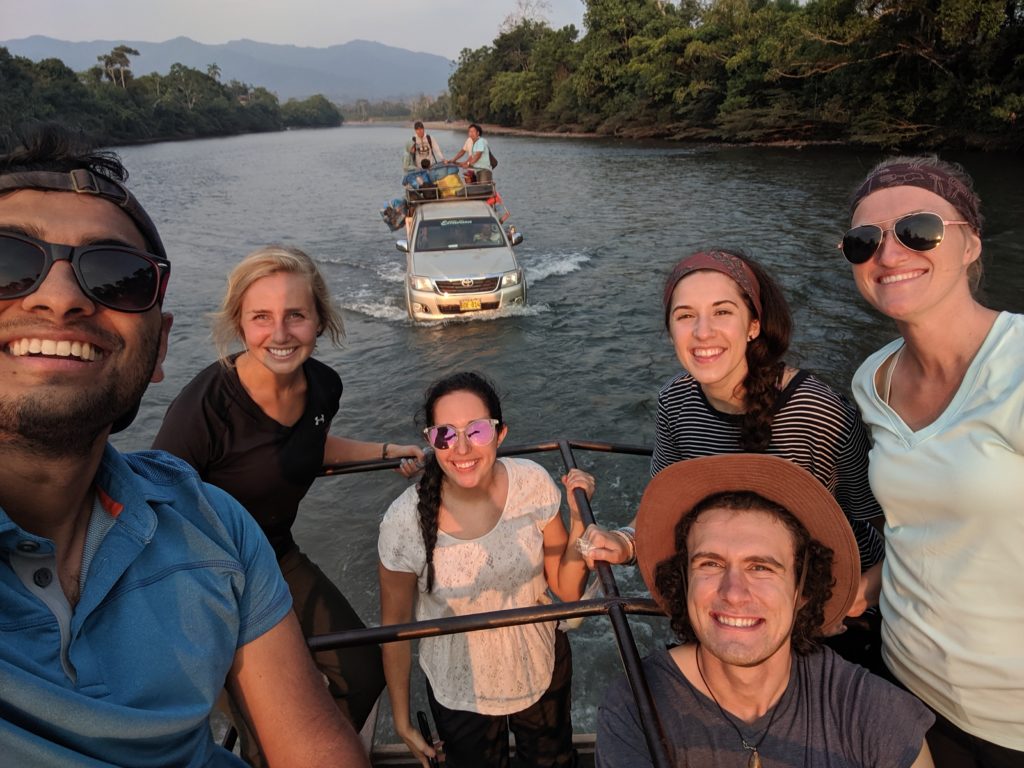
The quickest path between 2 points is a line or in this case a river. Members of the travel team and our NGO partners are shown traveling through the nearby river, which at the right depth, is the fastest method of reaching our project community in Shiringamazu. 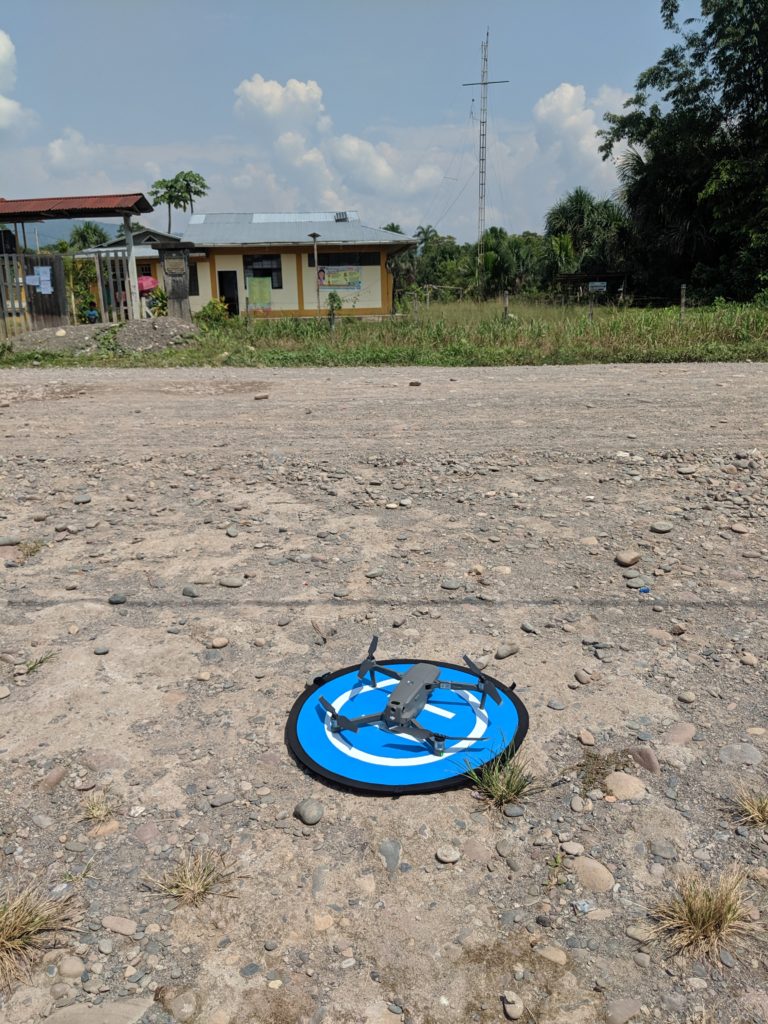
The travel team took to the sky during this assessment trip. This drone provided much needed relative elevation data that we can use to determine the best placement of water supply infrastructure.
The gathering data activities included topographical measurements and well yield testing. The topographical data was collected by conducting an aerial drone survey. The potential location of a water catchment, wells, pumps, and storage tanks will all be determined using the topographical data. The well yield test was conducted in conjunction with a local contractor, Benjamin. The test well was pumped down at a rate of 20 L/min, for 2 hours. Aquifer replenishment was inadequate to replace the water draw-down, indicating alternatives need to be explored.
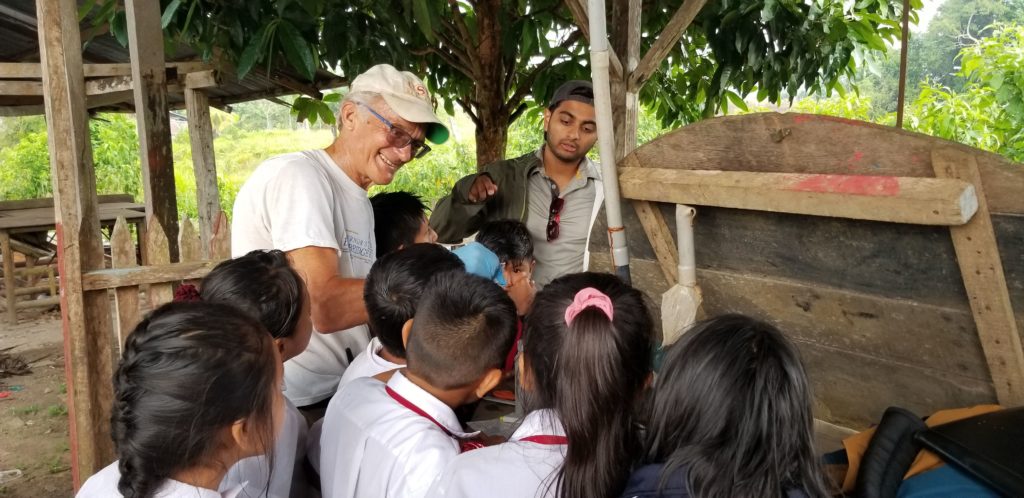
Chris and Kavin are teaching the local school children lessons in water sampling and water quality analysis. 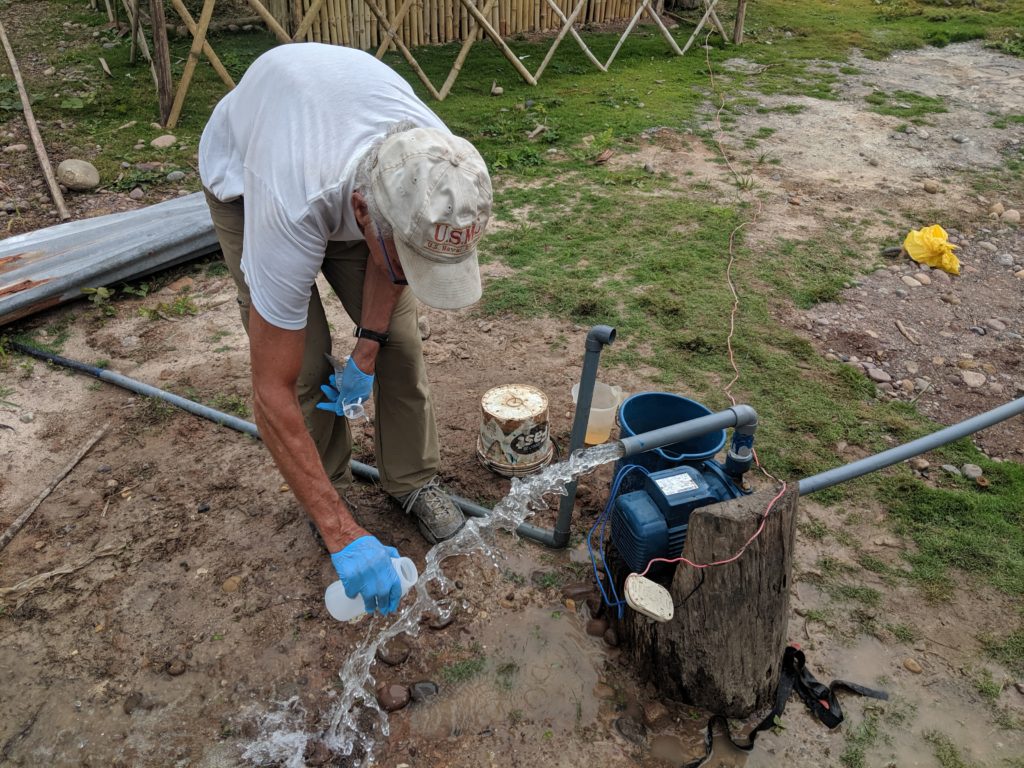
Here we see Chris collecting a water sample from a nearby household water source. This information gives the project team insight into the quality of various sources used by the community.
To further understand the community’s water demand, household surveys were conducted. The household surveys focused on the current water sources, quantity utilized, and associated health effects. The current water sources are a local stream, surface water, and household wells. These sources do not provide a sufficient amount of clean water for the community.
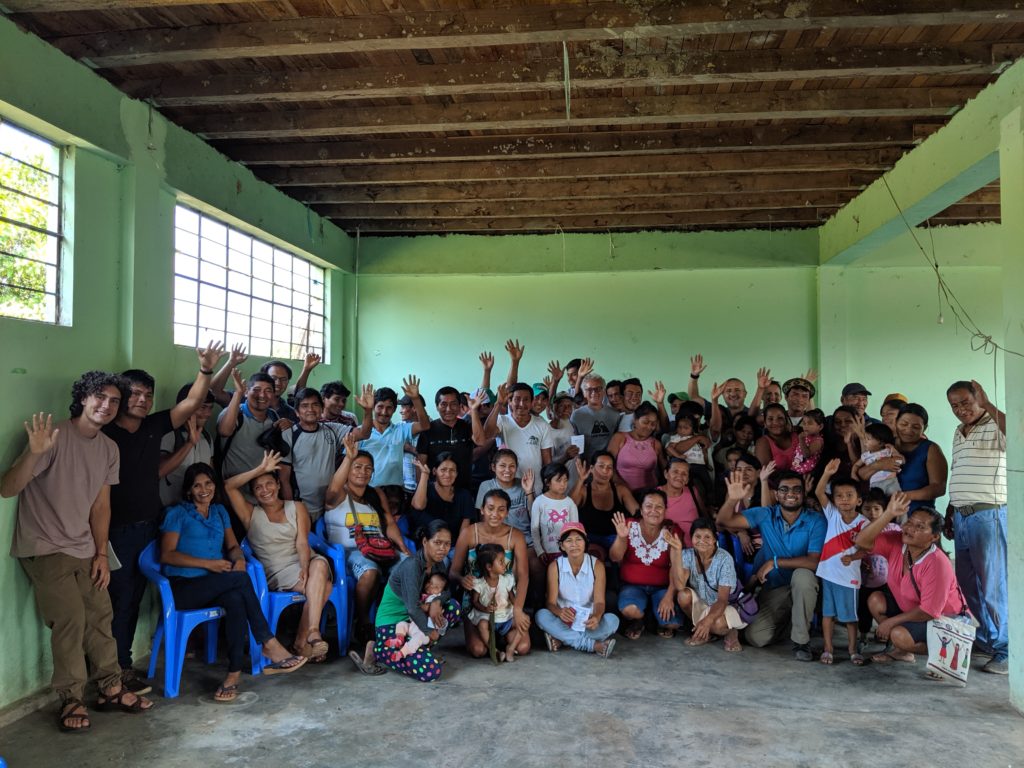
After a week in the Shiringamazu, the team participated in a community meeting together with our partners from Reach Global. It was rewarding for everyone to share what we had learned on the visit, and our plans forward.
Coordinating with community leaders yielded important community commitments. Community leaders agreed to the EWB cost share structure. Members of the community will collaborate with contractors and EWB travelers to construct the project. Finally, the community made a commitment to water sanitation standards. The amalgamation of these factors allowed EWB-DC to give the project is a “Go” status!
